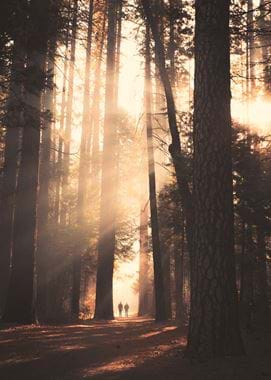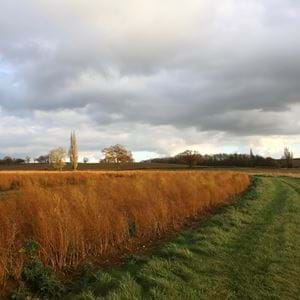A late autumn walk
A late autumn walk
Whether you go solo, with those you live with, or with one socially-distanced friend, a walk this time of year can be a wonderful thing. The weather’s not too warm and not quite nose-bitingly cold yet, and (if you choose your day well) it can be perfectly crisp and bright too, while the landscape is just about still holding onto its golden yellows and russet reds. But, with our own little patches well-covered by this point, it can be tricky to find the excitement and sense of adventure in a walk without straying too far from home. Or so you thought.
Discovering the new
Many of us tend to stick to the same routes, even if subconsciously, so the chances are that there is something new to be found in your locality if you do a little digging. Searching online for recommendations from others is always a good bet, but we’re also big fans of digging out a map and doing a bit of old-fashioned adventuring for ourselves.
We still love paper Ordnance Survey maps that you can spread out on the dining table at home to get a proper overview of an area – something you just can’t do very easily on a screen – when you might be able to spot an undiscovered park, woodland or nature reserve, or even just a new footpath to follow. The OS Explorer maps are the best for plotting local rambles. Collect a few to get a good sense of what’s in your broader area (the Landranger maps will show you a bigger scale, but less in the way of local detail). Rather handily, these paper maps also come with a digital download these days, which you can load onto your phone using the OS app and use while you’re out and about. This allows you to pinpoint yourself exactly (so no arguments over who took a wrong turning where) and even plot out your own route to estimate the distance, elevations and time it’ll take you to walk it.
Maps aside, we’ll also often turn to The National Trust for well-marked and maintained walking routes, both at properties and in the landscapes they look after. Many of these places have their walks published online with details of the difficulty, distance and instructions on how to follow the route and what to look out for. At properties, you can also ask the welcome guides or rangers who’ll often have paper maps you can use – not to mention personal recommendations.
And reimagining the old
You don’t have to seek out a different route to experience the thrill of the new. Very often, if we look at our familiar walks with a fresh set of eyes, they can still have a lot to give. And in fact, it’s when we know a place well that we’re able to really notice the way it changes over time, from which tree drops its leaves first to the view that gradually reveals itself behind the hedgerows with each passing autumn day.
One way to see a place differently is to change your perspective. Instead of continuing on past that bench you usually walk by in the park, take a moment to sit down instead. Or, choose to do your preferred circuit the other way round today. It might open up a new vista. Even the shift in light when visiting at a different hour can reveal details you’d never spotted before.
Another idea is to broaden your knowledge. That could be on the history of the place you usually walk in, in which case your local bookshop is usually a brilliant source – reach out to them and they’ll be able to recommend titles from their local interest section which they can pop in the post or set aside for you to collect. Or, it could be that you read up on the nature you see around you every day. The Cloudspotter’s Guide by Gavin Pretor-Pinney, The Hidden Life of Trees by Peter Wohlleben and Entangled Life: how fungi make our worlds, change our minds and shape our futures by Merlin Sheldrake, are all books we’ve loved that have transformed the way we view a humble saunter down the lane.
Looking for a new walk recommendation? Last year, we collected together some of our favourites to do during winter, which you can read about here.









